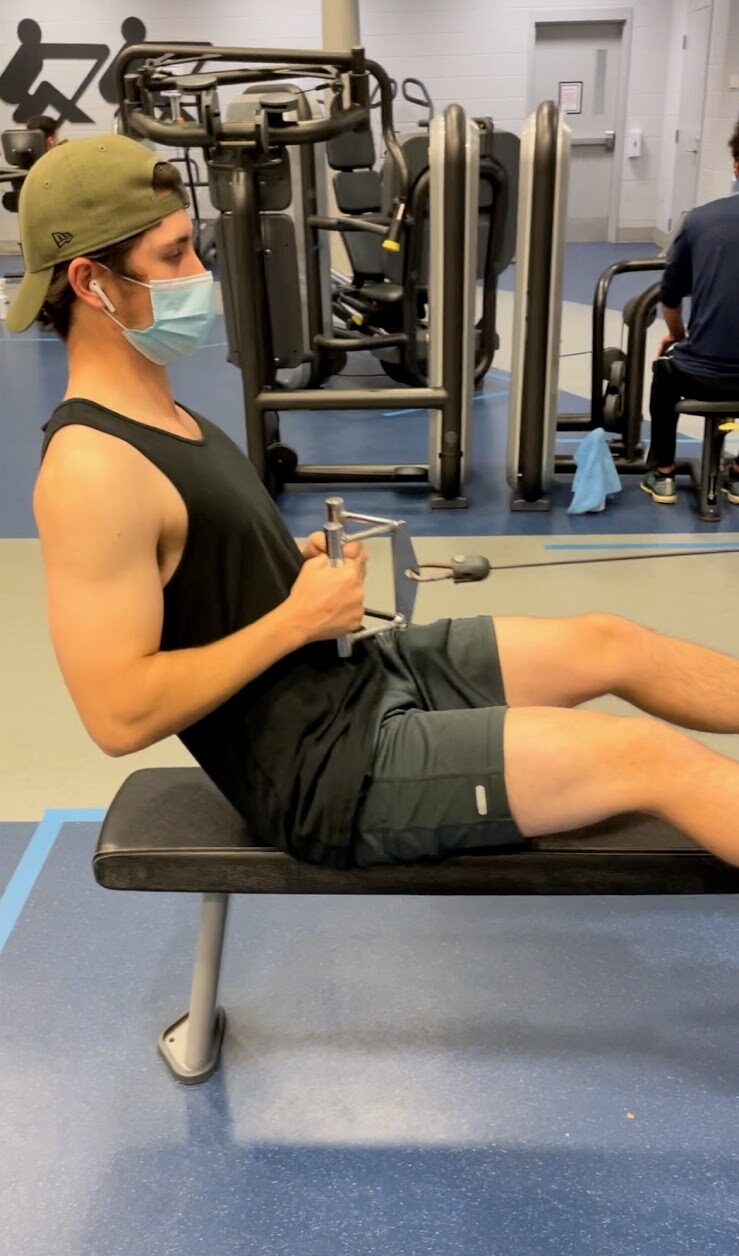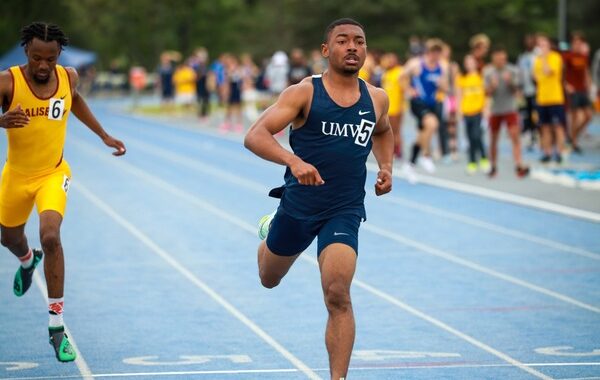Gym fashion: students weigh in on comfort versus aesthetics
3 min read
Sebastien Bonte working out in his preferred tight-fitting athleisure | Paul Thomas
By: Paul Thomas
Something that might not be commonly thought about for gym-goers is how their clothing affects the workout experience. There are different ideal types of clothing for workouts per person, but it seems that the key factors in all types of workout clothing are comfort, style and function.
Each person has their own individual ideas on what types of clothing would make the best workout experience. Focusing on fit, some decide to go with tight fitting clothing, such as senior business admin major, Sebastien Bonte. “Personally I like tight things so I can just see my muscles and it just motivates me.” From Bonte’s point of view, being able to see success drives motivation to keep going.
Others however go for looser fitting clothing like Brenna Creamer, a senior geography major. Creamer said, “I try to wear clothes that are looser and give me the space I need to move and get a good workout in.”
Function in clothing is another key aspect. If the apparel is not meant for a certain type of workout, it could be a detriment to the workout. Shape concludes,“What you wear directly affects your performance. You wouldn’t wear the same running shoes on a hike, right?” This is a key, because most people know working out in boots or dress shoes is very different compared to good athletic shoes.
Material is also an important factor to consider, according to Bonte and Creamer. According to Shape, this is why many people go with clothing that is flexible, such as elastic or spandex. These materials are normally good for working out because they breathe better and have other functions like moisture wicking, as many UnderArmor apparel items do. These functions can make the workout experience completely different as it can be much less efficient if the wearer is too hot or soaked in their own sweat.
There have been a few studies that suggest the concept of enclothed cognition. This essentially means that your clothing can aid in determining your emotions. This is seen in a study done by the Journal of Experimental Social Psychology, where participants were tested in different aspects wearing a lab coat and not wearing a lab coat, then being told that the coat was either a doctor’s coat or a painters coat. In this study, participants were more attentive wearing the coat and being told it was a doctor’s coat rather than not wearing the coat or being told it was a painter’s coat. This was due to the symbolic meaning of the items.
This can apply to workout clothing as well, according to some students. Zane Burk, a senior communication and digital studies major, says, “I like being well dressed and feeling ready to go — I like having a decent workout fit, matching clothes and all.” In Burk’s case, his style does play a part in the success of his workout.
Bonte, Burk and Creamer all agreed that comfort is the most important factor in athletic apparel.
Creamer explains “For me, if the workout clothes are not comfortable then it’s harder to workout in them.” In Creamer’s case, being uncomfortable can make her workout more difficult which can hurt her experience, and that can discourage her from continuing the workout session.











